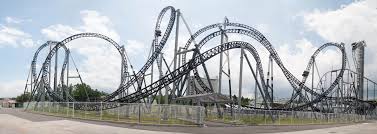I’ve been participating in StoryStorm by Tara Lazar and absolutely love being challenged to come up with at least one book idea a day in January. The ideas often start slowly then multiply faster than bunnies once I get used to grabbing all the ideas around me before they vanish. The goal is to reach 30 ideas. I’m over 55 ideas and hope to have even more by the end of the challenge. What a fantastic feeling! But…I noticed that only two of those ideas are MG.
It didn’t really hit me until now that I usually come up with tons of picture book ideas before choosing my favorites to turn into manuscripts while I tend to focus on one MG idea, fleshing it out, interviewing the characters, and letting it breathe for a bit before running it through Joyce Sweeney’s Plot Clock and diving into a first draft.
I’ve always had major ‘aha’ moments for my middle grade novels. The idea hits and follows me around, insisting I pay attention. It feels so magical! But I never really thought about attacking a new MG from another angle until I was given a simple interview to fill out at a writing intensive. I felt like I was throwing random things together to create a character, but after writing for so long, I automatically found ways to weave possible issues into the character. We had to write a scene for that character and I think it has potential. Of course, I’ll have to flesh it out first. It’s great to have a new way of coming up with MG ideas in case one isn’t stalking me when I’m ready to plunge into a new project.
I decided to create my own interview questions, in case I need them in the future. If you’re looking for inspiration, I hope filling this in will help you (hint, you don’t have to fill it out in order—hop around as needed):
Name and nickname:
Age/gender:
Physical characteristics that make him/her stand out:
What this character wants most in the world:
Greatest fear:
What his/her friends are like?
What’s his/her home and school situation like?
External flaws:
Internal flaws:
What would this character do if he/she won the lottery?
What would this character miss most if he/she didn’t have any money?
What wouldn’t he/she want anyone else to know?
How would this character describe himself/herself?
How would others describe him/her?
I hope the ideas flow for you! Are there any questions you’d add to this list? I’d also love to know how you come up with the ideas for your manuscripts—or if you’re a teacher, how your students come up with ideas.



